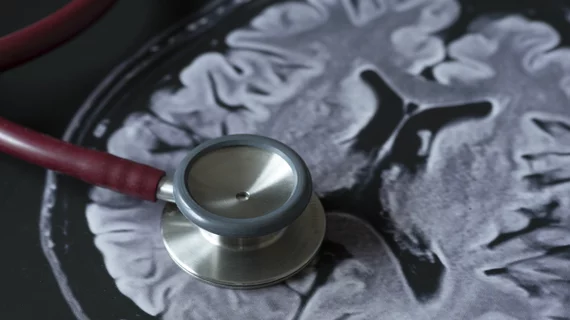Quantifying a patient’s blood-brain barrier dysfunction (BBBD) could help inform risk stratification and stroke prevention strategies following a transient ischemic attack (TIA), researchers reported in the May edition of Stroke.
Patients with “extensive BBBD” were more than five times as likely to have a stroke during a median follow-up of 1.7 years, wrote lead author Yonatan Serlin, MD, with McGill University in Montreal, and colleagues.
Diffusion-weighted MRI (DWI) is currently used to detect acute brain infarctions, which are linked to a future risk of more severe strokes.
“Nevertheless, the diagnosis of TIA remains challenging and TIA mimics comprise nearly 60% of clinic referrals,” Serlin et al. wrote. “The unmet need for a reliable diagnostic biomarker of microvascular brain disease is affirmed by TIA cohort studies displaying high variance of 9% to 67% in the frequency of DWI positivity.”
Looking to address these challenges, the authors developed and validated a way to measure patients’ BBBD using dynamic contrast-enhanced MRI. They prospectively performed this test in 57 adult patients from a single center in Israel who were diagnosed by a stroke specialist with TIA or minor stroke.
Normal blood-brain barrier permeability was determined from brain scans of 50 healthy volunteers, including 23 who were age-matched to the patient cohort. Microvascular permeability was determined by the rate at which contrast agent accumulated in each brain voxel; a classification of BBBD was reserved for when permeability values exceeded the 95th percentile from healthy controls.
Overall, the localization of BBBD corresponded to the clinical presentation in 72% of the cohort. Notably, 20 of 31 patients with negative DWI findings were found to have BBBD.
Also, patients with extensive BBBD were 5.35 times more likely to have a new stroke during follow-up, compared to a risk ratio of 0.89 for patients with positive DWI.
“Sustained BBBD could signify a subtle transient ischemia that was not sufficient to alter the DWI signal, and a long-lasting microvascular injury that underlies transient neurological dysfunction,” the authors wrote. “Since timely initiation of stroke prevention strategies may reduce the total stroke burden, the association of BBBD with development of recurrent brain infarct suggests a potential role for BBBD mapping in identifying patients at risk of stroke.”
Serlin et al. said their report is the first to quantify blood-brain barrier leakage in patients with TIA or minor stroke and suggest an association with clinical outcomes.
“We propose a clinically-applicable quantitative approach for the diagnosis of microvascular pathology and subtle brain ischemia,” they wrote. “Large-scale studies are required to confirm the diagnostic, prognostic, and predictive value of quantitative BBB mapping.”

